Resources
School level
Type
Topic
- Citizen Science (29)
- Eco challenges (5)
- Endangered species (29)
- Extreme weather (16)
- Indigenous Sea Country (34)
- Marine debris (16)
- Reef connectivity and biodiversity (97)
- Reef Management (44)
- Reef Posters (27)
- Reef Threats (37)
- STEM Units (34)
- Sustainability (26)
- Virtual Learning Experiences (12)
- Water quality (17)
- World heritage (57)
Date
- September 2025 (3)
- September 2016 (5)
- October 2025 (6)
- October 2023 (1)
- November 2025 (1)
- November 2021 (6)
- November 2013 (1)
- March 2020 (1)
- March 2015 (1)
- June 2025 (42)
- January 2016 (1)
- January 2013 (1)
- January 2012 (1)
- January 2011 (1)
- January 2010 (1)
- January 2009 (1)
- January 2008 (1)
- January 2007 (1)
- December 2025 (2)
- December 2021 (1)
- August 2025 (4)
- August 2019 (1)
- April 2020 (1)
Search results
214 result(s) found, displaying 31 to 40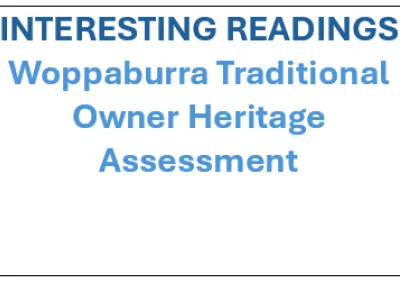
Document
Navigate the rich heritage of the Woppaburra Traditional Owners.
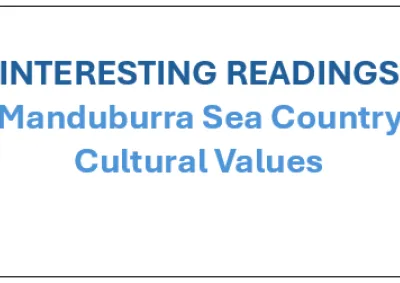
Document
Chart a course through Mandubarra Sea Country with our mapping project! Discover the key cultural values held by Mandubarra Traditional Owners and navigate the rich heritage of this sacred land.
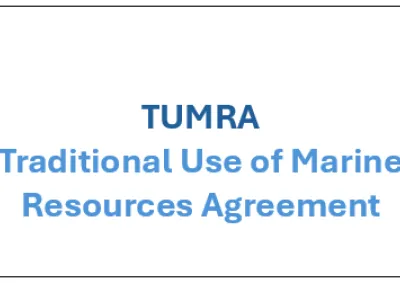
Reef Beat poster units
Determined Native Title and Traditional Use of Marine Resources Agreement (TUMRA) areas in the Great Barrier Reef Marine Parks as of September 2021!
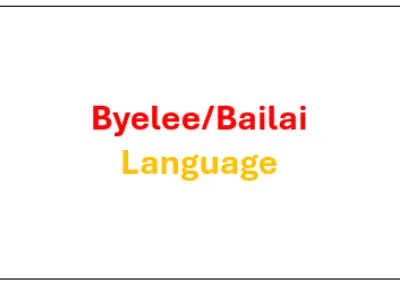
Document
Unlock the secrets of learning with our Chatterbox Challenge – where every fold explores traditional reef language.
Bayali (also spelt Biyali, Baiali, Byelle, Byellee, and also known as Orambul or Urambal) is an extinct Australian Aboriginal language of Queensland in Australia, spoken in the Rockhampton and Gladstone areas.
Bayali (also spelt Biyali, Baiali, Byelle, Byellee, and also known as Orambul or Urambal) is an extinct Australian Aboriginal language of Queensland in Australia, spoken in the Rockhampton and Gladstone areas.

Document
Unlock the secrets of learning with our Chatterbox Challenge – where every fold explores traditional reef language.
The Gurang Gurang and Goreng Goreng languages are closely related but not the same. Both languages belong to the Waka-Kabic subgroup of the Pama–Nyungan languages.
The names are often used interchangeably, and there is some overlap in the regions where they are spoken, primarily in Central Queensland.
The differences between them are subtle and often pertain to dialectal variations rather than being entirely separate languages. For example, the pronunciation and some vocabulary might differ slightly between the two!
The Gurang Gurang and Goreng Goreng languages are closely related but not the same. Both languages belong to the Waka-Kabic subgroup of the Pama–Nyungan languages.
The names are often used interchangeably, and there is some overlap in the regions where they are spoken, primarily in Central Queensland.
The differences between them are subtle and often pertain to dialectal variations rather than being entirely separate languages. For example, the pronunciation and some vocabulary might differ slightly between the two!

Document
Unlock the secrets of learning with our Chatterbox Challenge – where every fold explores traditional reef language.
Taribelang, also known as Bunda, Gureng-Gureng is a language of Queensland. Although no longer spoken as a native language by the Taribelang or Bunda people, it is spoken as a 2nd or 3rd language by under 100.
Taribelang, also known as Bunda, Gureng-Gureng is a language of Queensland. Although no longer spoken as a native language by the Taribelang or Bunda people, it is spoken as a 2nd or 3rd language by under 100.
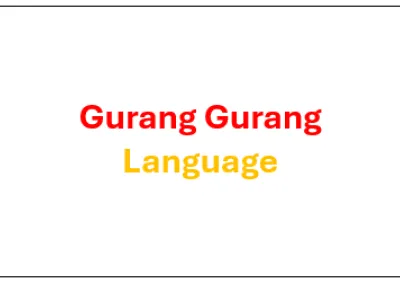
Document
Unlock the secrets of learning with our Chatterbox Challenge – where every fold explores traditional reef language.
The names are often used interchangeably, and there is some overlap in the regions where they are spoken, primarily in Central Queensland.
The differences between them are subtle and often pertain to dialectal variations rather than being entirely separate languages. For example, the pronunciation and some vocabulary might differ slightly between the two!
The names are often used interchangeably, and there is some overlap in the regions where they are spoken, primarily in Central Queensland.
The differences between them are subtle and often pertain to dialectal variations rather than being entirely separate languages. For example, the pronunciation and some vocabulary might differ slightly between the two!

Document
Unlock the secrets of learning with our Chatterbox Challenge – where every fold explores traditional reef language.
Warrgamay is an extinct Australian Aboriginal language of northeast Queensland. It was closely related to Dyirbal. It is also known as Waragamai, Wargamay, Wargamaygan, Biyay, and Warakamai.
The language region includes the Herbert River area, Ingham, Hawkins Creek, Long Pocket, Herbert Vale, Niagara Vale, Yamanic Creek, Herbert Gorge, Cardwell, Hinchinbrook Island and the adjacent mainland.
Warrgamay is an extinct Australian Aboriginal language of northeast Queensland. It was closely related to Dyirbal. It is also known as Waragamai, Wargamay, Wargamaygan, Biyay, and Warakamai.
The language region includes the Herbert River area, Ingham, Hawkins Creek, Long Pocket, Herbert Vale, Niagara Vale, Yamanic Creek, Herbert Gorge, Cardwell, Hinchinbrook Island and the adjacent mainland.

Document
Unlock the secrets of learning with our Chatterbox Challenge – where every fold explores traditional reef language.
Warrongo (or War(r)ungu) is an Australian Aboriginal language, one of the dozen languages of the Maric branch of the Pama–Nyungan family.
It was formerly spoken by the Warrongo people in the area around Townsville, Queensland, Australia. Warrungu - Queensland, west of Ingham and Abergowrie almost to Einasleigh.
Alternative names for the language include Warrangu, Warrango, War(r)uŋu, War-oong-oo, Gudjala and Gudjal. The Warungu language region includes areas from the Upper Herbert River to Mount Garnet.
Warrongo (or War(r)ungu) is an Australian Aboriginal language, one of the dozen languages of the Maric branch of the Pama–Nyungan family.
It was formerly spoken by the Warrongo people in the area around Townsville, Queensland, Australia. Warrungu - Queensland, west of Ingham and Abergowrie almost to Einasleigh.
Alternative names for the language include Warrangu, Warrango, War(r)uŋu, War-oong-oo, Gudjala and Gudjal. The Warungu language region includes areas from the Upper Herbert River to Mount Garnet.

Document
Unlock the secrets of learning about reef creatures and their habitats with our Chatterbox Challenge – where every fold leads to new knowledge!



